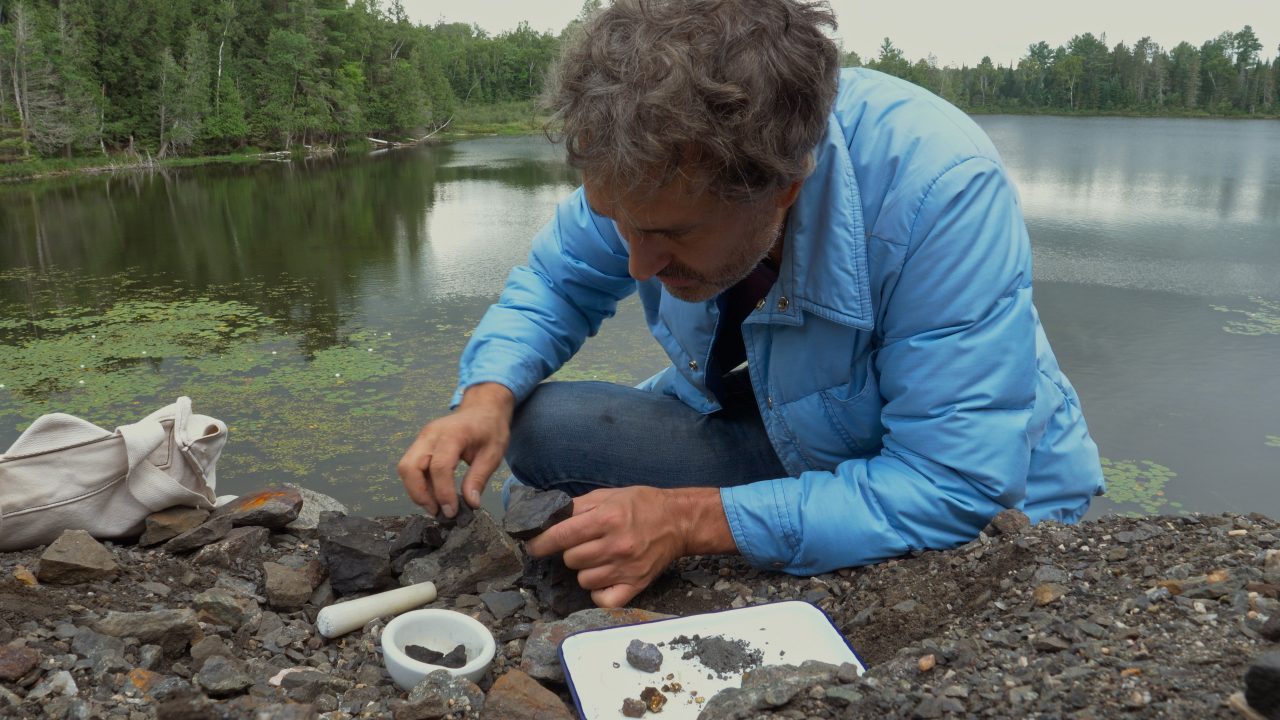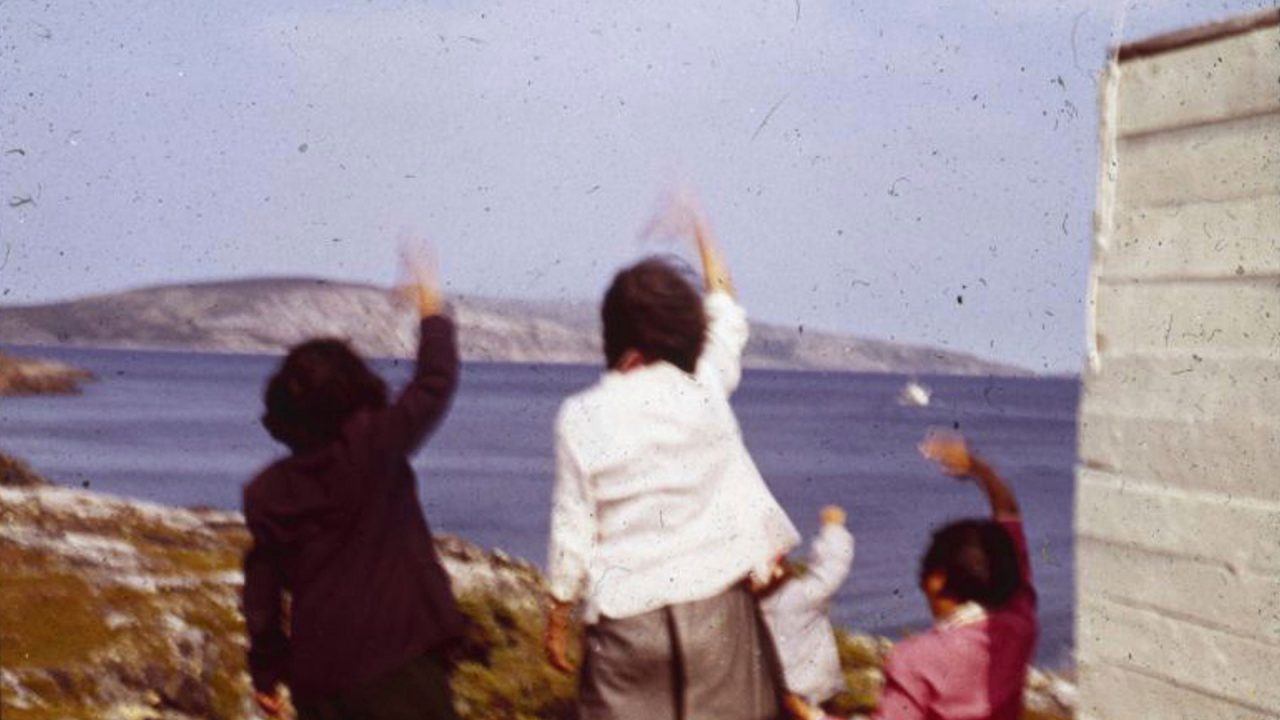
Mini-Lesson for The Colour of Ink
Mini-Lesson for The Colour of Ink
Mini-Lesson for The Colour of Ink
Recommended Ages: 15-17
The Colour of Ink, Brian D. Johnson, provided by the National Film Board of Canada
Warnings: Language (minimal)
Synopsis: Jason Logan is a Toronto-based artist, inkmaker and forager. He began his career as an illustrator in New York City and became interested in natural sources of pigment when his children were born. This documentary, organized by colour, takes us into Jason’s world, highlighting his curiosity, spirit of experimentation and creativity as he gathers natural and botanical materials throughout his travels and transforms them into ink, working like a mad scientist of sorts. For Jason, the creation of ink becomes a vehicle for connecting and relationship building with artists and other creatives from around the world. The Colour of Ink can be used in Visual Arts classes and also relates to human geography.
Pedagogical Objectives: This mini lesson invites students to analyze where art materials come from by looking at the impact of drawing on the natural world to make ink. They will also explore concepts of permanence and ephemerality and can engage in geographically tracking the movement of Logan’s inks from place to place. The mini lesson also creates opportunities for students to research an individual artist represented in the film, and finally to work in pairs to make ink for one another.
Keywords: Ink, Visual Art, Colour, Documentary, Self-Expression, Science, History and Geography of Ink
Overarching Question: How does the example of the making and sharing of ink from natural materials help us understand our connection to one another, locally and globally, and our connection to the land?
Note to Teachers: Although it’s not necessary to watch The Colour of Ink to carry out a number of the activities, the majority of this lesson can be carried out by using only the clips provided in this mini-lesson.
Activity 1: Investigate: Collecting Materials
Watch Clip: 00:00–01:27
Activity:
Without introducing the film, show students the first clip and ask them:
- Where do you think this is taking place?
- Who is this person and what is he doing?
Have students share and compare their answers.
Summary:
This is a fun way to get students involved in viewing The Colour of Ink. Students can use their imaginations and make inferences to guess what is about to happen next.
Activity 2: Research: Engaging with the Natural World
Watch Clips: 1:27–5:41 and 7:15–8:51
Activity:
Have students create a chart outlining the advantages of gathering materials from nature for Logan himself, for his family, for the quality of the artwork and for environmental sustainability.
As a class, individually or in groups discuss the following questions:
- What does Jason mean when he says he’s excited to see the art bring the ink to life?
- Define the term “alchemy”; how do you think it applies to this documentary?
- Does the time-consuming and intense process Logan uses “matter” to the final piece?
- To what extent does the relationship between Jason, the creator of the ink, and someone like Koji, the calligrapher, impact the work itself?
Geography students could do a mapping activity, especially after watching The Colour of Ink. In groups, students could create a map that charts the movement of different inks created by Jason Logan and those he meets and their source ingredients.
Summary:
Students can reflect on the difference between creating inks from nature and using store-bought products, as well as the impact of the artists’ intention and attention on the making process.
Activity 3: Debate: Reflecting on Permanence and Ephemerality
Watch Clips: 9:59–11:28, 26:00–28:14, 46:56–47:30, 55:30–58:58
Activity:
As a class, list historical examples of the “permanence” of ink.
Discuss how important it is to have something that is permanent.
- How important do you think ink is historically?
- Where would we be without it?
- How could ink evolve in the future?
Have a Debate: Split the class into two groups: one that argues ephemeral art is superior and shares examples, and one that argues permanent art is superior and shares examples.
Summary:
In The Colour of Ink, Jason Logan describes a lack of “materiality” in the digital age, and yet he doesn’t guarantee the permanence or archival quality of his ink.
The opposite of permanence is ephemerality, which highlights the element of process. Examples include sand or ice sculpting, etch-a-sketch, buddha boards or even a video on social media that “disappears” after 24 hours. This activity helps students think about the impact of permanence and ephemerality on both the creative process and product.
Extension Activity: Artist Profiles
In groups, after having watched the entire film, students choose one of the artists in the film, write their name on chart paper and identify elements of their culture or creative process that stood out.
For example, ROXX, a tattoo artist, creates an environment of wellness in their studio, Soraya Syed draws on her connection to Islam in her calligraphy practice, etc.
Paste the chart papers on the wall and have the groups walk throughout the classroom and add additional elements to other artists’ papers.
Additional Discussion Question:
How did engaging with these artists enrich Logan’s practice? How did his ink enrich theirs?
Summary:
Students will reflect on the unique, unconventional journeys of the many artists featured in The Colour of Ink. Students will make links between an artist’s approach to their work and their own culture and geographic location.
Take Action: Create and Share
Have students work in pairs and use foraged materials to create inks for one another’s creative work. This can include researching the materials and processes needed to make ink, like purchasing gum arabic, writing the recipe for their ink, posting a process video on social media, packaging and labelling it creatively the way Jason Logan does, etc. The students can then gift each other their inks, experiment with them and share feedback with one another about how they work.
Summary:
This activity can help Visual Arts students identify helpful elements of Logan’s creative process. For example, when Koji receives the magnetite ink from Logan, it doesn’t initially behave as he expects it to. How does he react? What kind of orientation or “way of seeing” allows Logan to find the botanical pieces he sources? What aspects of this could students bring into their creative practice?
Michele Montgomery is a Visual Arts teacher at Cardinal Leger Secondary School in Brampton, Ontario. Over the past 25 years of teaching Visual Arts, Michele has shared her knowledge of art materials, skills and techniques. Her students have learned to express themselves through drawing, painting, sculpting, print making and digital media. Field trips, visiting artists and lots of hands-on activities are essential in Michele’s classroom. She participated in the development of the NFB’s Digital Storytelling workshop modules and continues to participate in the NFB Educator Network.
Pour lire cet article en français, cliquez ici.
Discover more Mini-Lessons | Watch educational films on NFB Education | Watch educational playlists on NFB Education | Follow NFB Education on Facebook | Follow NFB Education on Pinterest | Subscribe to the NFB Education Newsletter



